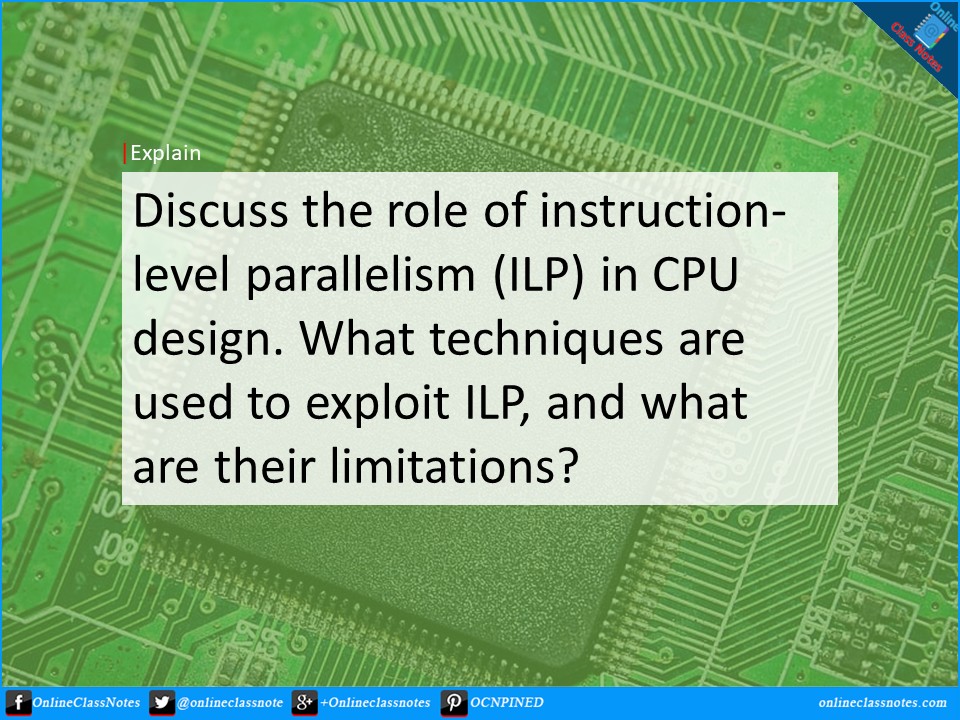Instruction-Level Parallelism (ILP) is a crucial concept in CPU design aimed at improving performance by executing multiple instructions simultaneously or overlapping their execution. ILP allows CPUs to exploit available instruction-level parallelism within a program to increase throughput and reduce execution time.
Role of Instruction-Level Parallelism (ILP) in CPU Design:
- Increased Throughput: ILP enables CPUs to execute multiple instructions concurrently, thereby increasing the number of instructions processed per unit time and improving overall throughput.
- Enhanced Performance: By overlapping the execution of instructions, ILP reduces the overall execution time of programs, leading to improved performance and responsiveness.
- Utilization of CPU Resources: ILP helps in better utilization of CPU resources by keeping them busy with executing instructions concurrently, thereby minimizing idle time and maximizing efficiency.
Techniques Used to Exploit ILP:
- Pipelining: Pipelining is a technique that divides the instruction execution process into sequential stages, allowing multiple instructions to be processed simultaneously at different stages of the pipeline. This technique exploits ILP by overlapping the execution of multiple instructions, thereby increasing throughput.
- Superscalar Execution: Superscalar processors incorporate multiple execution units within the CPU, allowing it to execute multiple instructions in parallel during each clock cycle. Superscalar execution exploits ILP by identifying independent instructions and dispatching them to different execution units simultaneously.
- Out-of-Order Execution: Out-of-order execution enables the CPU to execute instructions out of their original sequential order, as long as data dependencies are satisfied. This technique allows the CPU to exploit ILP by executing independent instructions in parallel, even if they are not contiguous in the program sequence.
- Speculative Execution: Speculative execution involves predicting the outcome of conditional branches and executing instructions speculatively along the predicted path before the outcome is known. This technique allows the CPU to maintain a steady flow of instructions and exploit ILP even in the presence of branch instructions.
Limitations of Exploiting ILP:
Dependency Chains: Dependencies between instructions, such as data dependencies and control dependencies, can limit the amount of ILP that can be exploited. Instructions with dependencies must be executed sequentially, leading to potential stalls in the pipeline and reduced ILP.
Resource Constraints: The number of available execution units, register ports, and other hardware resources within the CPU can limit the degree of ILP that can be exploited. Resource contention can occur if too many instructions are competing for the same resources simultaneously, leading to performance degradation.
Branch Prediction Accuracy: Branch instructions introduce uncertainty into the instruction flow, making accurate branch prediction crucial for exploiting ILP. Incorrect branch predictions can lead to wasted work and pipeline flushes, reducing the effectiveness of ILP exploitation.
Complexity and Overhead: Techniques for exploiting ILP, such as out-of-order execution and speculative execution, introduce additional complexity and overhead to CPU design. This complexity can increase hardware costs, power consumption, and design complexity, making it challenging to achieve efficient ILP exploitation.
